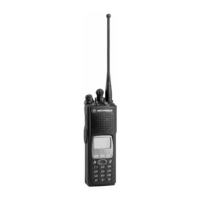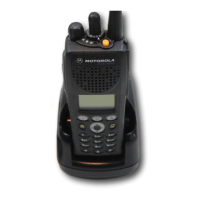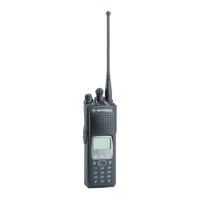Basic Maintenance
4
Handling
Precautions
Complementary metal-oxide semiconductor (CMOS) devices, and
other high-technology devices, are used in this family of radios. While
the attributes of these devices are many, their characteristics make
them susceptible to damage by electrostatic discharge (ESD) or high-
voltage charges. Damage can be latent, resulting in failures occurring
weeks or months later. Therefore, special precautions must be taken to
prevent device damage during disassembly, troubleshooting, and
repair. Handling precautions are mandatory for this radio, and are
especially important in low-humidity conditions.
• The XTS 5000 radio casting has two vent ports that allow
for pressure equalization in the radio. Never poke these
vents with any objects, such as needles, tweezers, or
screwdrivers. This could create a leak path into the radio
and, in the case of XTS 5000 R radios, the radio’s
submergibility will be lost.
• The pressure equalization vent is located on the chassis,
just below the battery contact. Never obstruct or cover the
two slots with any object, including a label. Ensure that no
oily substances come in contact with this vent.
•(XTS 5000 R Radios Only) The XTS 5000 R radio is
designed to be submerged to a maximum depth of 6 feet,
with a maximum submersion time of 4 hours. Exceeding
either maximum limit may result in damage to the radio.
XTS 5000 R Radios Only 1. If the radio battery contact area has been submerged in water, dry
and clean the radio battery contacts before attaching a battery to
the radio. Otherwise, the water could short-circuit the radio.
2. If the radio has been submerged in water, shake the radio well so
that any water that may be trapped inside the speaker grille and
microphone port can be removed. Otherwise, the water will
decrease the audio quality of the radio.

